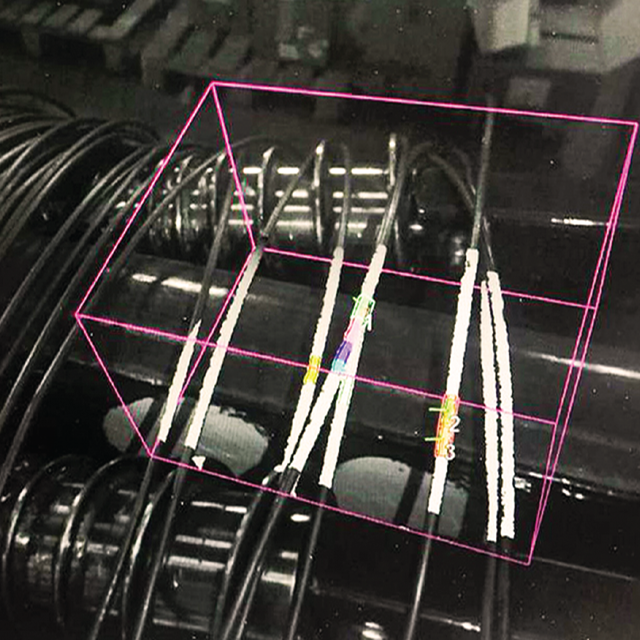AIC Group has developed the ambitious mechanical system, AIC TrimBot, using both vision technology and industrial robotics, including mechanical parts, 3D vision systems, a high level of automation and artificial intelligence.
Keywords: Trimming & Sampling systems, Material Handling, Robotics application, Rolling Mill, Automation, 3D Vision System, Pinch-roll, Wire Rod Coils, Rings, Billets, Processing Turret, Safety
INTRODUCTION
When rolling wire in a long product rolling mill, the head and tail is normally of inferior quality. There are several production-related reasons for this such as uncooled front-ends or uneven cooling on the loop cooling conveyor. Regardless of the reason for this lesser quality, these parts of the wire must be removed in a process referred to as coil trimming.
Conventional trimming and sampling stations are typically located within the confines of the coil handling system. The most common coil handling method is to use a horizontal C-hook system where the coil is resting on the horizontal load-carrying member of a C-hook, supported by an overhead conveyor structure. Very often, when the coil arrives at the manual trimming station the front and the back of the coil can be quite unruly with the first several rings being tangled or intertwined with each other.
The manual activity starts with the operator working to untangle the first rings and create order from the disorder. Once this is accomplished, the operator identifies, separates, cuts and remove pieces of the wire, ranging from a short sample of a loop to several loops from the exposed end of a wire rod coil. This manual activity offers a very poor work environment and is a frequent source of different types of injury to the operator. There is also a negative impact on both yield and product quality as individual operators may interpret and implement the static trimming instruction different from their colleagues.
To address this, AIC Group is proud to introduce a new, patent-pending robotic system on the market intended to completely eliminate the above-mentioned manual trimming activity based on counting rings. The new process is able to cut the wire with extreme accuracy and repeatability which reduces the amount of waste and increases the overall yield of the rolling mill. The autonomous system is also able to communicate with the rolling mill in real-time, making it possible to adjust the trimming and sampling process on each individual coil depending on the actual rolling parameters for each individual billet.
